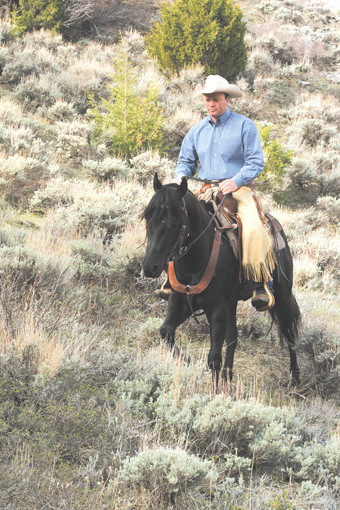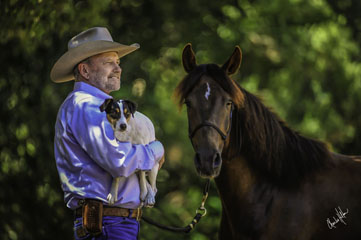
Head tossing and pulling on the bit is a very common problem and one that can be easily solved. Sometimes with this type of problem there can be a physical reason behind the behavior. Before we address changing the behavior through training, I believe firmly in ruling out any possible physical causes. With this particular type of problem, it is valuable to start by having an equine dentist check the horse’s teeth. Sometimes a horse has caps off his teeth or his wolf teeth may cause the head tossing. If the teeth check out fine, then it is a good idea to have an equine chiropractor come for a visit. The vertebrae can sometimes be out of alignment, especially the first or second vertebrae, and when contact is made with the bit, it can really bother the horse. If it appears there are no dental or medical issues, then it is time to check the equipment being used. The first piece of equipment to consider is the bit. Is the bit too severe? Is the horse really ready for a higher level of bit (more leverage)? Bits should not be changed out lightly. There is an appropriate use and level of training for each type of bit. The more leverage on the bit, the more critical it becomes that the horse truly understands giving to the bit, and that the rider has light hands, is riding with the proper amount of contact, and is releasing consistently at the right time. Alternatively, the bit being used may be appropriate but simply does not fit the horse correctly. If the bit is too tight and resting improperly against the teeth, the horse will feel discomfort. The correct fit for a bit is critical and when in doubt, I always recommend going to a properly fitted snaffle. If the horse continues to toss his head and pull on the bit, then one of two things is happening. First, it may be that the horse has not been properly trained to accept or give to the bit. If the horse has gone through the right training and understands to give to the bit, then it is clearly a behavioral issue and almost certainly induced by the rider, as it is never the horse’s fault. Assuming that this is the case, it comes down to those all critical skills, timing and feel. Timing and feel take time for a rider to develop. Getting it rights takes a lot of practice. Very subtle gives by a horse can be especially hard to recognize and reward. As a newer or unfocused rider we can often be concentrating on one part of our body while another part “lets us down” so to speak. How many of us have urged the horse forward while simultaneously pulling back on the reins? Or, ridden with a lot of contact on the reins because we were nervous, without really ever letting up? It is very easy to give a horse a mixed message or to simply train our horse to perform the problem behavior because we released (rewarded) right at the moment the horse was doing the wrong behavior. It’s not the horse’s fault. Horses seek relief from pressure. If we don’t give the release when the horse expects it, he will search for it. When riding, this failure to release timely often translates into tossing the head or pulling at the bit. When a horse gives, you have to soften every single time. There has to be a consistent reward when the horse is doing it right by giving the horse release from the pressure. Fortunately, there is one very simple and effective exercise to work with a horse on this problem. You can do this with one or two reins and you should be prepared to play with the length, contact and anchor point until you get the feel. When your horse starts tossing his head, pickup one rein, take out the slack and fasten your hand to the saddle, and I mean really anchor it there. With your hand anchored, the horse will keep bumping up against the contact as it throws its head around. When the horse finally quiets its head, even for a second, immediately release. Once again anchor and repeat the exercise until the horse realizes it is far more comfortable to keep its head quiet. Do the exercise on one side and then switch hands and work the other side the next time the head tossing starts. The real trick to making this exercise work is that we have to educate our hands, otherwise the problem will reoccur. Riding correctly is all about timing and communication with the reins. You have to remain focused at all times on releasing/softening when the head is quiet. Pulling on the bit is the same issue. We firmly anchor our hand so that it does not become a pulling contest –because guess who will win? We let the horse do all the pulling and we simply hold hard to keep the position consistent. When the horse softens or gives, we release immediately. If it is a truly chronic problem with the horse, it may take dozens of repetitions over days or weeks to correct the behavior. This is a very correctable problem with your focus and patience.



